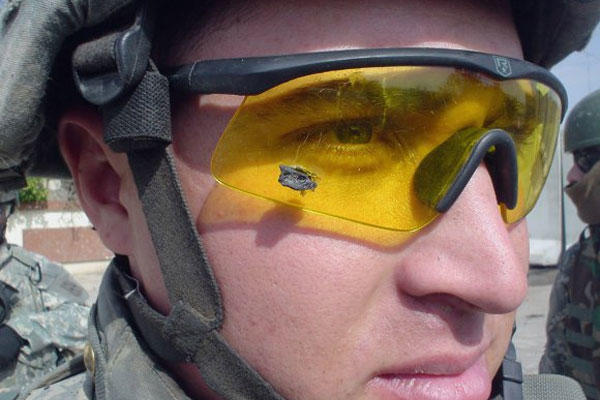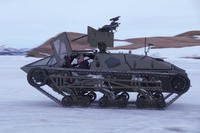As part of its new Soldier Protection System, the U.S. Army plans to field eye protection that adjusts to daytime and night conditions so soldiers won't have to constantly change eyewear on operations.
Senior Army equipment officials on Wednesday discussed the new body armor system with lawmakers at a hearing before the House Armed Services Tactical Air & Land Forces Subcommittee on the ground force modernization budget request for fiscal 2017.
Army Lt. Gen. John Murray, Army deputy chief of staff, G-8, told lawmakers that soldiers have typically had to carry two pairs of protective eyewear over the last 15 years -- one for day and one for night.
"It doesn't sound like much, but that is a huge deal to not have to physically transition eye protection," Murray said. "The actual lenses do it for you."
The Soldier Protection System, or SPS, is a full ensemble that goes beyond torso protection and provides the soldier with improved protection for vital areas such as the head and face.
Rep. Niki Tsongas, a Democrat from Massachusetts, asked about the recent decision to accelerate the program and the incorporation of sensors designed to monitor a soldier's vital signs.
The Army's 2017 budget request shows a significant increase in research and development of the effort, from about $5 million to $16 million, she said.
"The additional funding helps to get us there sooner," said Army Lt. Gen. Michael Williamson, military deputy to the assistant secretary of the Army for acquisition, logistics, and technology. "Although we were looking at these systems simultaneously, the way the funding allocated wasn't until 2019 that we could get to the integrated sensor suite."
The integrated sensors portion of the SPS is "a really important component because what that will allow you do is not only measure things like heart rate but it will also give you feedback on things like hydration," he said.
Eye protection is another key part of the SPS, Williamson said.
"One of the more impressive things they are doing is building transitional eyewear that allows a soldier to move from a dark environment into the light and back and forth without the disorientation that occurs because of that change in environment," he said, adding that the new eyewear also increases the blast fragmentation protection by about 10 percent.
The new Modular Scalable Vest portion of the SPS features a more streamlined design compared to the current Improved Outer Tactical Vest.
The most noticeable feature of the SPS is the new Ballistic Combat Shirt, or BCS, which has been updated with soft armor on the neck, shoulders, high chest and high back to protect against 9mm rounds and shrapnel. The lower part of the shirt is still a breathable, fire-resistant material.
It also features the Integrated Head Protection System, which gives the soldier the ability to attach extra armor to the top of the helmet to provide additional protection against snipers shooting down on soldiers riding in an open turret, as well as the armored facemask to protect against gunfire and shrapnel.
The SPS is also part of the Army's effort to lighten the soldiers load, Williamson said.
"The goal for the entire system is 10 to 15 percent less weight than the soldier carries today," he said.
Marine Brig. Gen. Joe Shrader, commander of Marine Corps Systems Command told lawmakers that the Marine Corps often works with the Army on individual protection equipment programs, such as the new "Enhanced Combat Helmet that we have developed with the Army and now are final stages if fielding the first 77,000 of those."
--Matthew Cox can be reached at matthew.cox@military.com.






























